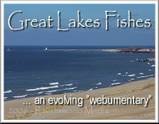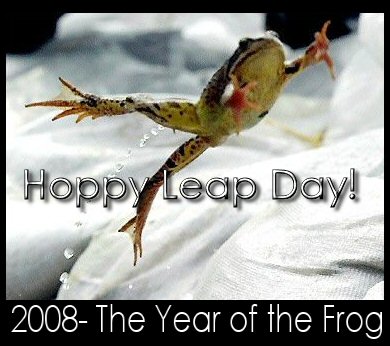Habitata Destruction at Celery Bog Nature Area-editorial by Joan Mohr Samuels
Mood:
 don't ask
Topic: Articles
don't ask
Topic: Articles
LETTER TO THE EDITOR
>
>I attended this week's Wednesdays in the Wild program at Lilly
>Nature Center and was horrified to see the devastation in the Celery
>Bog Nature Area in West Lafayette. The entire zone of trees on the
>north side of Lindberg Road between Purdue's North Golf Course and
>the marsh was clearcut. And the tree cutting extended quite a
>distance out into the water!
>
>WHY was this done?
>
>Certainly it was NOT to improve the natural habitat. According to
>people who work in the natural resources field, even though some of
>the trees were dead, they were providing valuable wildlife habitat.
>Many waterfowl species use tree trunks for cover and perches during
>the spring and fall migration. And many species including
>woodpeckers, Prothonotary Warblers, Wood Ducks, and Hooded
>Mergansers breed in the cavities of dead trees.
>
>Hard to believe it was done for the safety of the golfers since the
>cutting was done along the edge of the golf course and into the
>marsh itself.
>
>And if aesthetics is the reason, go take a look and see how
>beautiful you think tree stumps and downed tree trunks look.
>
>Having a golf course close to a marsh like the Celery Bog Natural
>Area is not the best idea to begin with and requires a bit of
>sensitivity to the needs of the wildlife in the area and to the
>public--the many walkers and birders--who come out to enjoy the
>peace and quiet and natural beauty of this area. Now when people
>look across the marsh on their walks, they will see golfers rather
>than the diverse populations of birds that used the area for
>roosting and nesting in the past.
>
>I think those who did this should consult with people in Purdue's
>Department of Forestry and Natural Resources to come up with a plan
>for replanting the area--hopefully with native trees and shrubs
>which will benefit the wildlife of the marsh and be pleasing to the
>people who come to enjoy the Celery Bog Nature Area or to play golf.
>
>Joan Mohr Samuels (765) 567-7023
>5828 Prophets Rock Rd
>West Lafayette, IN 47906
________
I am writing in response to Friday's Journal and Courier article "Dying trees removed near bog."
 February 29, 2008
February 29, 2008
It may surprise readers to learn that the dead and dying trees that were cut down along the edge and into the marsh were NOT worthless, but in fact provided very valuable habitat for birds and made the area a popular birding spot for people from all over Indiana. Now all of this habitat on the east side of the marsh bordering the Purdue Kampen Golf Course has been destroyed.
So what difference does it make that Purdue golf course officials had all the trees (dead and dying and alive) clear cut from the entire eastern edge of the Celery Bog marsh?
* Gone is the vegetative screen and sound buffer between the golf course and the marsh which allowed visitors to Celery Bog Nature Area to enjoy views of nature, not golfers and a golf course, and to hear sounds of nature, not balls being struck, golfers talking, lawn mowers running, ...!
* Gone are the perching sites and cover for the many wading birds that come to the marsh.
* Gone are the standing dead trees in the water for the cavity nesters.
* Gone will be many of the birds that used this habitat.
Local birder, Russell Allison, who has visited the Celery Bog Natural area several times a week for a number of years and has photographed the many species which use the dead and dying trees in the area which now has been clear cut, reports observing:
- an osprey in the tops of these trees using them for launching pads to go after fish, then returning to the same trees to eat its catch
- double crested cormorants, great egrets, and black crowned night herons roosting in these trees
- as many as 18 species of ducks stopping at the marsh during migration and feeding in the open water, then swimming to the base of the trees in the water for safety and a secure place to feed.
Local wildlife ecologist, Barny Dunning, states that "...even if the trees were dead, they were providing wildlife habitat, so it can't be said that they were worthless because they were not living. Many waterfowl species would hang out among the tree trunks for cover during the spring and fall. And of course many species including woodpeckers, Prothonotary Warblers, Wood Ducks, and Hooded Mergansers breed in cavities of dead trees."
Friend of the Bog and longtime birding enthusiast, Temple Pearson, says that the tree cutting "destroyed a magical place that served as protection, perches, and nesting spots for our wildlife that inhabit the Bog."
Destroying this birding habitat was a big mistake, but it's done. Let's hope something has been learned to prevent a similar happening in the future.
Purdue is a University with a Forestry and Natural Resources Department. It's hard to understand why its golf course officials had the authority to cut down all the trees in a sensitive birding area along the marsh and part of a nature area without involving people connected with the Celery Bog Nature Area and others who are knowledgeable about this wetland habitat and its wildlife ecology.
Purdue now has an opportunity to be a better neighbor to the Celery Bog Nature Area and to the large community of birders and walkers who come out to enjoy this natural area, by having the golf people and the Celery Bog people and the Forestry and Natural Resources people sit down together to plan replacement plantings that provide good habitat for the birds as well as a vegetative screen between the golf course and the marsh. This could be good for all concerned, though it will be many years before the habitat provides what was lost by the recent clear cutting of trees.
Replanting this area with native grasses, as proposed by golf officials, would not provide the perching, roosting, and nesting sites which have been lost.
Submitted by Joan Mohr Samuels,
active in community conservation efforts and outreach
such as Wednesdays in the Wild, INPAWS RIP Squad,
and NATIVE ROOTS newsletter (editor)
5828 Prophets Rock Road
West Lafayette, IN 47906
An "endorsement" of what I wrote from Sycamore Audubon Society President!
Very well said, Joan. Thank you.
I think it's important to add that three of the birds you list, the Osprey, the Black Crowned Night Herron, and the Great Egret are or were listed on the Indiana Endangered Species List.
Chuck Tuttle
President
Sycamore Audubon Society
West Lafayette, IN
While this doesn't sound frog related, everything is connected. With the recent warmer weather, were frogs in those trees? Celery Bog is a wonderful place, (that I will be doing a Frogs and Toads of Indiana presentation on April 2 at 7pm...I know, shameless plug) and its sad that more thought and planning wasn't executed before making such a drastic change to the landscape. It will wind up being arguments between humans, golfers vs naturalists, or grounds keepers vs foresters, but in the end, its the wildlife that has truly lost.
Posted by wendellsfrogblog
at 9:49 AM EST

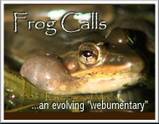
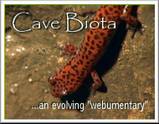
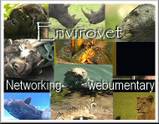 www.midwestfrogs.com
www.midwestfrogs.com